Best Orbital Sander: 5 Picks 2024
- July 25, 2023
- 0 comment
When it comes to finishing a woodworking project with finesse, the right orbital sander can be your best friend. Perfect for smoothing out those rough edges, removing old paint, or preparing a surface for a fresh coat, an orbital sander is an essential tool in any woodworker’s arsenal.
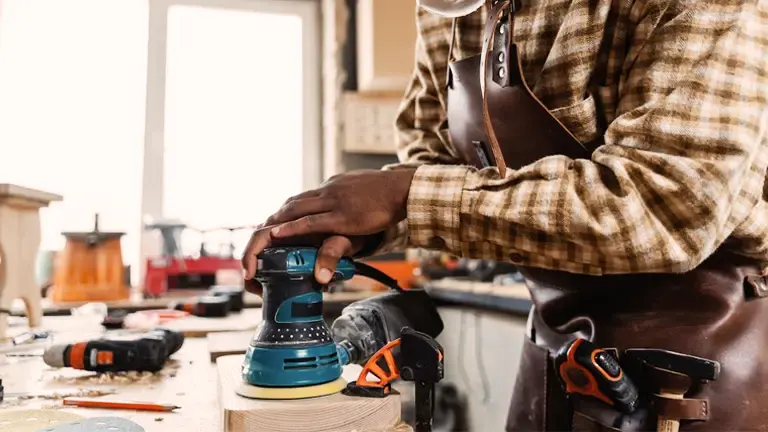
In this article, we’ll delve into the specifications, features, and user experiences of some of the most highly recommended orbital sanders as of 2021. Whether you’re a seasoned woodworker or a DIY enthusiast starting your journey, you’ll find the perfect companion for your projects right here!
Top Orbital Sander List:
- DeWalt DWE6423K Orbit Sander
- Bosch ROS20VSC Palm Sander
- Makita BO5041K Orbit Sander
- Black & Decker BDERO100 Orbit Sander
- Festool 574993 Orbital Sander
1. DeWalt DWE6423K Variable Speed Random Orbit Sander
Specifications:
- Motor: 3.0 Amps
- Speed: 8,000-12,000 OPM
- Orbit Diameter: 5/32″
- Weight: 4 lbs.
Additional Features:
- Comes with a carrying bag for easy transport.
- The dust-sealed switch protects against dust ingestion for a longer switch life.
- Improved dust collection and interfacing with vacuum locking system.
- Reduced vibration design.
The DWE6423K is a force to be reckoned with when it comes to orbital sanders. Its power is backed by a 3.0-amp motor, capable of delivering an adjustable speed range between 8,000 to 12,000 orbits per minute (OPM), ensuring quick, efficient material removal.
Ergonomics and comfort are at the forefront of the design. Its reduced height brings you closer to the work surface, giving you a greater level of control. The over-molded rubber grip reduces hand fatigue, allowing for longer, more comfortable working sessions.
A dust-sealed switch and one-hand locking dust bag give the DeWalt DWE6423K durability and reliability. The sealing prevents dust ingestion for a longer switch life, and the dust collection system keeps your workspace clean, minimizing clean-up time.
Benefits
- Powerful 3.0-amp motor offering robust performance.
- Comfortable grip due to the rubber over-mold, reducing user fatigue.
- Dust-sealed switch and one-hand locking dust bag enhance durability and cleanliness.
Drawbacks
- It may be a bit pricier than other comparable models.
- Some users may find the dust bag small, requiring frequent emptying during large projects.
2. Bosch ROS20VSC Palm Sander
Specifications:
- Motor: 2.5 Amps
- Speed: 7,500-12,000 OPM
- Orbit Diameter: 3/32″
- Weight: 3.5 lbs.
Additional Features:
- Microfilter dust system filters fine dust particles.
- The pad dampening system helps prevent swirl marks.
- Hook-and-loop disc attachment contains over 35,000 long-life hooks.
The Bosch ROS20VSC is designed for adaptability. Its variable speed dial allows you to adjust the speed from 7,500 to 12,000 OPM, matching the machine’s pace to the task at hand. The result? A finer finish and a reduced chance of damaging your material.
Bosch’s microfilter system traps particles as tiny as a 1/2 micron in diameter, giving you a cleaner, safer workspace. The dust canister is durable, compact, and transparent, showing the dust level and letting you know when it’s time for a clean-up.
The soft-grip top and body design provide comfort and excellent grip, enhancing your control while reducing fatigue.
Benefits
- Variable speed control allows for adaptability.
- The microfilter system ensures a cleaner, safer workspace.
- The soft-grip top and body design offer comfort and superior grip.
Drawbacks
- Some users have reported that the sanding discs may not stick well after extended use.
- Dust canister, while effective, might not be as efficient as an external vacuum setup.
3. Makita BO5041K 5-Inch Random Orbit Sander
Specifications:
- Motor: 3.0 Amps
- Speed: 4,000-12,000 OPM
- Orbit Diameter: 1/8″
- Weight: 3.5 lbs.
Additional Features:
- Large two-finger trigger switch with conveniently located lock-on button.
- The adjustable front handle allows for sanding in corners and confined areas.
- Large two-finger trigger switch with conveniently located lock-on button.
The Makita BO5041K features a 3.0-amp motor with an adjustable speed control dial that allows you to set the speed anywhere from 4,000 to 12,000 OPM. It offers smoother operation and a superior finish.
Comfort is paramount in the design. A rubberized palm grip and adjustable front handle provide better control, reducing operator fatigue, and increasing comfort during long periods of use.
The efficient through-the-pad dust collection system helps to provide a cleaner work environment, while the built-in vacuum port adapter makes it compatible with most vacuum hoses.
Benefits
- Adjustable speed control allows for smoother operation and superior finishes.
- The rubberized palm grip and adjustable front handle improve control and comfort.
- The efficient dust collection system provides a cleaner work environment.
Drawbacks
- Some users may find it a bit heavier compared to other models.
- While it has a built-in vacuum port adapter, it doesn’t come with a vacuum hose.
4. Black & Decker BDERO100 Random Orbit Sander
Specifications:
- Motor: 2.0 Amps
- Speed: 12,000 OPM
- Orbit Diameter: 5/64″
- Weight: 3.2 lbs.
Additional Features:
- Dust-sealed switch to extend tool life.
- Random orbital action for high removal rate and quality finish.
- The hook-and-loop system allows for fast and easy paper changes.
Don’t let the compact size of the BDERO100 fool you. Its random orbital action ensures efficient material removal and a high-quality finish. The speed of 12,000 OPM balances the need for quick material removal with the precision necessary for a fine finish.
The BDERO100 also features a dust-sealed switch, extending the tool’s lifespan by preventing dust ingestion. The hook-and-loop system makes changing sandpaper quick and easy, keeping you focused on the job at hand.
Despite its affordability, this sander doesn’t compromise on performance, making it a valuable addition to any toolkit.
Benefits
- Compact size and lightweight design allow for ease of use.
- The speed of 12,000 OPM balances quick material removal with precision.
- Affordable without compromising performance.
Drawbacks
- Lacks variable speed control.
- The dust collection system, while effective for smaller jobs, might not be sufficient for larger projects.
5. Festool 574993 Random Orbital Sander ETS 125 REQ-Plus
Specifications:
- Motor: 250 Watts
- Speed: 6,000-12,000 OPM
- Orbit Diameter: 5/64″
- Weight: 2.4 lbs.
Additional Features:
- Step-less variable speed allows you to adjust to the needs of the application.
- Balanced vibration stop (VS) design delivers better finish results, smooth operation, and greater comfort.
- Packed in a Systainer case for simple transport and storage.
The Festool 574993 ETS 125 REQ-Plus is the epitome of high-end, professional-grade sanding. With its compact design and weight of just 2.4 lbs., this tool is perfect for vertical surfaces and overhead work.
Equipped with a powerful 250-watt motor, the sander delivers a speed of 6,000 to 12,000 OPM, ensuring rapid material removal and an ultra-smooth finish. Its pad brake and step-less variable speed control further enhance precision and surface quality.
One of its standout features is the stellar dust extraction system. It removes dust directly at the surface, resulting in a cleaner work environment, a clearer view of the workpiece, and significantly less post-project cleanup.
With the Festool Sander, you get what you pay for – exceptional performance, outstanding dust extraction, and high-quality finishes. It’s a worthy investment for any serious woodworker.
Benefits
- Compact design and light weight are perfect for vertical surfaces and overhead work.
- Powerful motor delivers rapid material removal and an ultra-smooth finish.
- A superior dust extraction system ensures a cleaner work environment and less cleanup.
Drawbacks
- It’s a higher-end model, so the price point may not suit all budgets.
- Replacement pads and sanding discs from Festool tend to be pricier than generic brands.
Comparison Table
| Orbital Sander | Power | Speed Range (OPM) | Orbit Diameter | Weight | Additional Features |
|---|---|---|---|---|---|
| DeWalt DWE6423K | 3.0 Amps | 8,000-12,000 | 5/32″ | 4 lbs. | Dust-sealed switch, dust collection system, reduced vibration design |
| Bosch ROS20VSC | 2.5 Amps | 7,500-12,000 | 3/32″ | 3.5 lbs. | Microfilter dust system, pad dampening system, hook-and-loop disc attachment |
| Makita BO5041K | 3.0 Amps | 4,000-12,000 | 1/8″ | 3.5 lbs. | Adjustable front handle, large two-finger trigger switch with lock-on button |
| Black & Decker BDERO100 | 2.0 Amps | 12,000 | 5/64″ | 3.2 lbs. | Dust-sealed switch, random orbital action, hook and loop system |
| Festool 574993 ETS 125 REQ-Plus | 250 Watts | 6,000-12,000 | 5/64″ | 2.4 lbs. | Step-less variable speed, balanced vibration stop (VS) design, comes with a Systainer case |
Key Takeaways:
- Power: The DeWalt and Makita sanders come out on top in terms of motor power, both boasting a 3.0 Amp motor. The Festool model, although lower in Amps, has a robust 250-Watt motor, indicating high efficiency.
- Speed: Makita offers the widest range, going down to 4,000 OPM for delicate tasks. DeWalt and Bosch also offer decent ranges with a higher limit of 12,000 OPM, suitable for tasks needing rapid material removal.
- Orbit Diameter: The Makita has the largest orbit diameter at 1/8″, potentially offering quicker material removal. The Bosch, Black & Decker, and Festool models have smaller diameters, which may provide finer finishes.
- Weight: Festool is the lightest, weighing in at 2.4 lbs. This makes it a good choice for extended use or overhead work. The heaviest model is the DeWalt at 4 lbs, still quite manageable for most users.
- Additional Features: All models boast a dust collection system. Festool’s step-less variable speed and balanced vibration stop design give you a high level of control over the tool. Makita stands out with its adjustable front handle and large two-finger trigger switch for ease of use. Bosch’s unique microfilter dust system and pad dampening system help ensure a clean workspace and fine finish.
So, here you have it – five top-of-the-line orbital sanders, each with unique features designed to enhance your woodworking experience. With the right tool in hand, you’re one step closer to achieving those perfect finishes you’ve always envisioned!
The Ultimate Guide to Mastering Random Orbital Sanders
Venturing into the world of woodwork or DIY projects? The random orbital sander is your loyal companion! Dive into the nuances of selecting the perfect one tailored to your needs:
1. Disc Size Dilemma
- Standard Picks: 5 to 6 inches in diameter.
- For the Herculean Tasks: Heavy-duty sanders with whopping 8-inch discs.
- Nooks and Crannies: Compact sanders with discs as tiny as one inch for precision.
Big tasks like sprucing up hardwood floors demand sizable discs. But for intricate crevices, the pint-sized ones are your best bet!
2. Power Play: Cordless vs. Corded
- Cordless Sanders: Ultimate mobility! Work on that porch or in your backyard without a hitch. Just remember, they’re battery-powered, so keep an eye on the juice!
- Corded Sanders: A bit more traditional; they love hanging by the power outlet or stretching with an extension cord. But once they’re in, they’re in for the long haul – uninterrupted!
3. Weight Watchers Between 2 and 4 pounds is the norm. Light ones are kind on your wrists but might compromise on power. The heftier ones? They mean business!
Random Orbital Sander: The Safety Suite
These sanders, while fantastic, demand respect. Our expert tips to ensure you play it safe:
- Gear Up: Safety goggles shield those peepers from the pesky dust and debris. Couple that with a dust mask or respirator, and you’re ready for action. Don that long-sleeved outfit and gloves to up the safety ante!
- Anchor that Workpiece: No surprises, please! Use clamps to ensure your masterpiece doesn’t take a wild turn when sanded.
- Clean Slate: Kickstart with a clutter-free workspace. Bid adieu to anything that might get in your groove – be it tools, wires, or other distractions.
- Gentle Touch: Let the sander shine; avoid pressing down too hard. It’s about finesse, not force.
- Hold Steady: Two hands, always! A firm, dual grip ensures the sander stays right where you want it.
- Power Off Ritual: Done for the day or just taking five? Disconnect that power source. An unplugged sander is a safe sander.
Step into the world of sanding with confidence, armed with the knowledge to choose and use your tool wisely!
Frequently Asked Questions
- What is an orbital sander used for?
An orbital sander is a versatile tool used for fine, detailed sanding work. It’s typically used on wood but can also be used on plastic and metal surfaces. It’s perfect for finishing work, like preparing wood for staining or smoothing out a surface after using a more aggressive sander. - What’s the difference between a random orbital sander and an orbital sander?
The main difference is the movement of the sanding pad. An orbital sander moves only in a circular motion, while a random orbital sander moves in a circular motion and back-and-forth. This means random orbital sanders can remove more material, provide a smoother finish, and are less likely to leave swirl marks on the surface. - What’s the best speed for an orbital sander?
The best speed depends on the job at hand. Higher speeds (around 12,000 OPM) are used for removing a lot of material quickly. Lower speeds (around 4,000 to 6,000 OPM) are better for fine finishing work. Models with variable speed controls are advantageous because they can be adjusted based on the task. - Do orbital sanders come with dust collection systems?
Yes, most modern orbital sanders come with dust collection systems. These usually consist of a bag or a canister attached to the sander. Some models also offer the option of connecting to a vacuum cleaner for more efficient dust collection. - How do I choose the right sandpaper grit for my orbital sander?
The grit you choose depends on your project. Lower grit numbers (like 60 or 80 grit) are coarser and good for removing material and smoothing out larger imperfections. Higher grit numbers (like 220 or 320 grit) are finer and ideal for finishing work. - Can I use an orbital sander for car polishing?
While some people do use orbital sanders for car polishing, it’s essential to use very high-grit sandpaper and proceed with caution to avoid damaging the car’s surface. It’s often recommended to use a tool specifically designed for car polishing instead. - Is an orbital sander the same as a palm sander?
The terms “orbital sander” and “palm sander” are sometimes used interchangeably. Both are typically compact, easy to control with one hand, and ideal for light sanding tasks. The term “palm sander” often refers to a square or rectangular sander (also known as a sheet sander), while “orbital sander” usually refers to a tool with a round sanding pad.
We’ve covered a lot of ground in this detailed review of some of the top orbital sanders on the market. Now it’s your turn. What’s your preferred orbital sander, and why do you love it? Have you had personal experience with any of these models? How did they perform in your home or professional projects?
Do you have any tips or tricks for getting the best results from your orbital sander? Or maybe you have a question or a point that you’re still unsure about? Let’s create a hub of knowledge and experience right here.
Leave your thoughts, experiences, and questions in the comments below. We can’t wait to learn from your insights and contribute to a shared understanding of these fantastic tools!

David Murray
Forestry AuthorI'm David Murry, a forestry equipment specialist with a focus on chainsaw operation. With over 13 years of experience, I've honed my skills in operating and maintaining a wide range of machinery, from chainsaws to log splitters. My passion for the outdoors and commitment to sustainable forestry drive my work, which emphasizes safety, efficiency, and staying updated with industry advancements. Additionally, I'm dedicated to sharing my expertise and promoting environmental awareness within the forestry community.

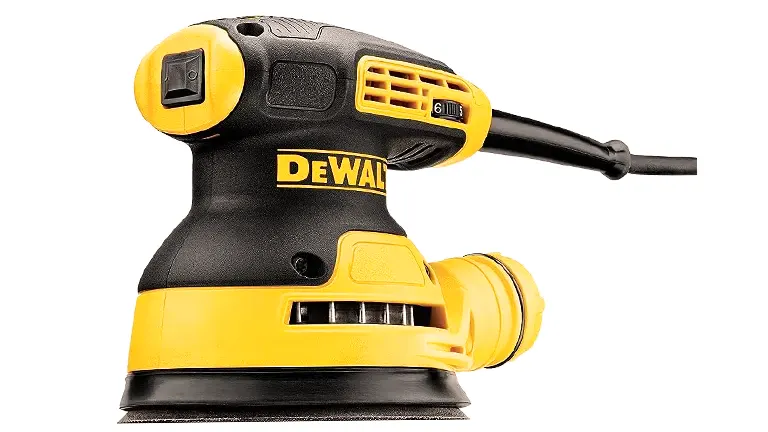


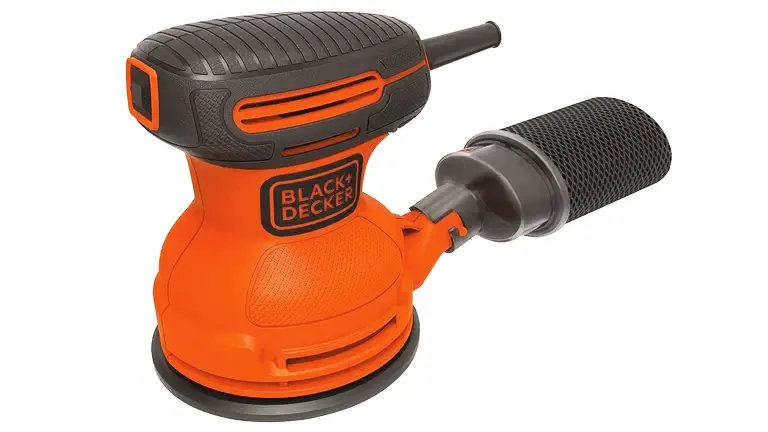



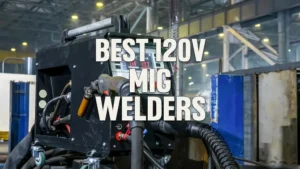
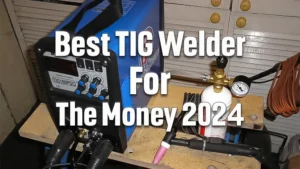

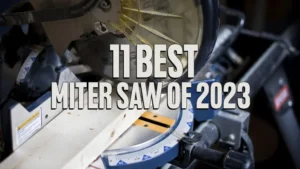





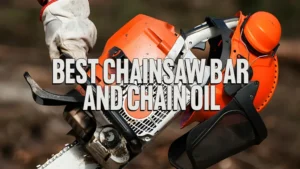
Leave your comment